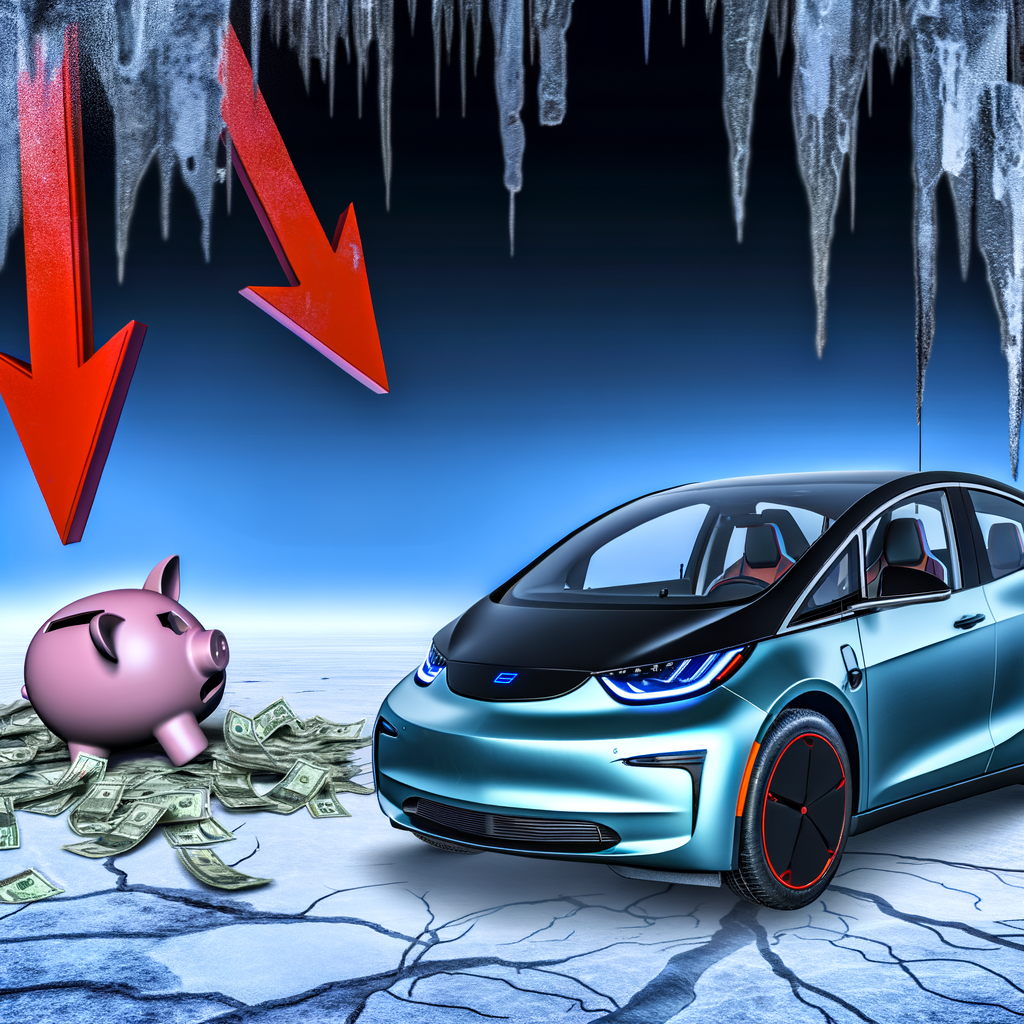Cars & Concepts
Fisker Ocean Review: A Promising EV Frozen in Beta Amid Bankruptcy Woes

Evaluation, After-Action Analysis: The potential of the Fisker Ocean as an electric vehicle could be stuck in development limbo
The significant hurdle that owners of the Fisker Ocean might encounter isn't necessarily connected to the vehicle's design aesthetics or its engineering prowess. Moreover, it may not even concern the tangible aspects of maintenance or the procurement of spare parts, as demonstrated by the ingenious solutions of Tesla Roadster enthusiasts in the past.
In essence, the potential of the Ocean may never fully come to fruition in terms of software development. The expectation that software updates delivered wirelessly could enhance the vehicle's performance and features over time is a standard hope. The idea is that an electric vehicle purchased today could offer a superior driving experience in the future. However, with Fisker's bankruptcy announcement on June 17th and the subsequent scramble among creditors to dismantle the company's assets, it seems unlikely that any organization would invest in upgrading these "outdated" Oceans beyond providing the basic necessary support to consumers.
Purchasers of the Fisker Ocean have essentially taken a gamble from the beginning, accepting their vehicles despite some notably unpolished aspects in various interface elements. This was all before Fisker introduced their significant software enhancement, known as the Fisker OS update 2.0.
The automotive industry is stepping into a new phase led by Tesla, where vehicles are increasingly reliant on software that allows for regular updates and improvements. Although this feature is a mark of prestige for car owners, it's not without its hefty price tag for manufacturers, requiring a dedicated crew of experts. It's no surprise to see software glitches in freshly released cars, and delays in electric vehicle production due to software hiccups or incomplete features are not rare. Software complexities have also been central to the turnover of top executives at one of the leading car manufacturers worldwide.
Fisker successfully handed over the car. However, it soon became clear that simply handing over the keys wasn't sufficient to maintain the excitement. Fisker didn't encounter any major production issues akin to Tesla's intense Model 3 manufacturing challenges, nor was there a situation that required CEO Henrik Fisker to rest on the factory floor, regardless of whether their partner, Magna-Steyr in Austria, would have permitted it.
2023 edition of the Fisker Ocean One
2023 Model of Fisker Ocean One
The inaugural model of Fisker's Ocean vehicle
Fisker Ocean: A finished electric vehicle yet lacking in novelty
When Fisker allowed me to take the Ocean for an overnight test drive towards the end of last year, the experience highlighted some clear strengths and weaknesses. In terms of its physical components, the Ocean seemed nearly complete. Compared to various other vehicles, the Ocean's construction felt sturdy. The doors had a reassuringly solid sound when shut, the controls were reliable, and the interior materials were both resilient and tactilely satisfying, surpassing my anticipations for the car's purpose.
Despite the difficulties presented by direct sales and support networks, it was evident from the outset that even though software played a crucial role in the Ocean's triumph, it was noticeably behind.
Currently, it seems that Fisker's decision to declare bankruptcy may result in their software development being halted, potentially leaving the car's system in an unfinished, beta state. That's the situation.
In a conversation with Wired towards the end of June, John A.E. Pottow, who specializes in bankruptcy law at the University of Michigan Law School, explained that if Fisker were to go bankrupt, they wouldn't be required to continue their software updates.
The inaugural model of the Fisker Ocean,
2023 Model of the Fisker Ocean One
2023 Model of the Fisker Ocean One
The Fisker Ocean ticks all the basic boxes. It boasts a well-balanced design with appealing aesthetics, and you'll find clever touches throughout the vehicle. The space utilization is impressive too. When I first entered its spacious interior, I was taken aback because it's designed without compromise for a traditional gas engine, fully exploiting the capabilities of its design.
Not long ago, I had the opportunity to experience the Kia EV9, and when observing from the driver's position towards the rear end of the car, the Ocean appears almost equally spacious, although it lacks a third row of seats. It's adequately elongated to accommodate an additional row, but it seems the ceiling height might be the restricting element. For those requiring room for five passengers along with considerable cargo, the Ocean certainly offers ample space.
Each of those sophisticated and slick traits align with what we anticipate from the renowned design guru, Henrik Fisker.
CEO of Fisker, Henrik Fisker, alongside the Ocean model featuring a solar roof.
Experiencing the Fisker Ocean Electric Vehicle: The Ideal versus Reality
Putting aside the peculiarities of the software and visual static, one could imagine the potential for this SUV to be quite enjoyable to drive. It seems to have a solid foundation in terms of vehicle basics, yet requires some ironing out of software issues. When navigating the freeways of Los Angeles, the Ocean's steering was quite light, maybe too much so, but it maintained a straight path admirably. Cruising at 80 mph, the ride was smooth and the SUV felt both hefty and anchored. Despite its considerable weight of around 5,400 pounds, the vehicle managed to keep its composure through sharply curved exits at lower speeds, even suggesting that it could be somewhat entertaining to drive.
After a bit of experimentation, I realized that avoiding the Ocean's eco-conscious Earth setting and being cautious with the inconsistent brake pedal was key. The primary driving settings available are Earth, Fun, and Hyper. Earth mode doesn't simply dampen the vehicle's reactions, as is common with Eco modes. Instead, it introduces a noticeable delay in acceleration when stepping on the gas pedal swiftly and experiences a hesitation before the mild regenerative braking activates upon releasing the pedal.
2023 Model of the Fisker Ocean One
During the evaluation, I noticed that the brake pedal on the vehicle required an unsettlingly long press to effectively reduce speed, whether through regenerative braking or the brake pads' action. Although I adapted to this over time, there were moments when it reminded me of the uncertain stopping experience in older hybrids and electric vehicles, where judging the final moments of a halt was unpredictable. Additionally, the car occasionally moved forward upon releasing the brake pedal without any clear pattern, adding to the inconsistency of the braking system.
A pair of permanent-magnet motors with identical gear reduction ratios produce a sound louder than the usual electric vehicle hum when accelerating at a moderate to intense pace, delivering a total power of 564 horsepower and 543 pound-feet of torque. The Ocean seemed to live up to the anticipated performance levels when it came to speed. In my experience, the car went from 0 to 60 mph in under five seconds, starting from a slow roll. Fisker advertises that it can achieve this in just 3.7 seconds using a Launch Mode that can be activated from the display when in Hyper mode. However, due to my reservations regarding its traction and stability control systems (which I will address later), I chose not to verify this claim.
The Ocean gives off the impression that it's lacking some of the finer points in its driving mechanics. It handles rough patches on the road with a bit of unease initially, but this is a common trait in hefty electric SUVs without air suspensions or adaptive dampers, and it's something you can adjust to over time. However, the absence of advanced, reliable, and most critically, consistent stability controls was a glaring omission. This became increasingly evident the longer I drove it and the more I tested its limits.
Debut Model of Fisker Ocean Set for
On my second morning with the Ocean, I decided to test its capabilities on winding mountain roads, but I was disappointed to find that the overly protective electronic aids prevented me from truly enjoying the drive. The tuning of the Ocean seemed to be geared towards an electronic chassis setup that wasn't quite perfected, lacking any form of predictive assistance. In corners where I felt confident enough to push the limits, the Ocean failed to impress, lacking what you'd expect from a contemporary stability control system. What I encountered was reminiscent of the rudimentary stability systems that barely advanced beyond traction control – they would sporadically apply the brakes rather than proactively manage the vehicle's trajectory to ensure it stayed on course and within the proper lane.
The handling of the Ocean appeared to diminish slightly when the regeneration setting was increased. While the regeneration level can be changed, it involves navigating to the Settings, followed by the Driving menu on the infotainment display. Although the intense regeneration mode doesn't enable driving with just one pedal, it is effective in significantly reducing the vehicle's speed.
The Fisker Ocean's performance in terms of efficiency left much to be desired. The data from the trip didn't convince me of the Ocean's efficiency credentials. It showed that after driving 180.6 miles, the vehicle had consumed 87.8 kwh of energy, giving an average of almost 2.1 miles per kwh. When I drove with more enthusiasm for approximately 84 miles on winding mountain roads, utilizing the Ocean's Fun and Hyper settings, the energy usage was marginally less compared to when I drove conservatively in Earth mode amidst regular traffic.
Taking into account the Ocean's battery capacity of 113 kilowatt-hours (with 106 kilowatt-hours available for use), it achieves a distance of approximately 223 miles on a full charge. This is significantly lower, by at least one-third, than the estimated 360 miles promised by the EPA's range rating. That's quite a
Numerous Fisker Ocean drivers have since claimed highway journeys exceeding 300 miles. Fisker has acknowledged improvements in measuring energy usage and tracking trips due to software upgrades after that initial test drive, thus the reliability of those early figures is questionable.
2023 Model of the Fisker Ocean One
The interior of the Fisker Ocean is roomy, cutting-edge, and contemporary. As soon as you step inside the Ocean, you're greeted with an array of features that showcase not only Fisker's excellent design skills but also the remarkable effort of the team in creating an inviting space with high-quality materials and interfaces.
From the outset, the partially see-through solar roof and the unique "California mode" stood out as distinct features not typically seen in other electric vehicles. This solar roof isn't just for show; Fisker claims it can regenerate approximately 1,500 miles annually, a figure which surpasses the estimates of other car manufacturers for comparable technology. Currently, however, there's no display or method to measure the energy being harnessed, unlike systems found in vehicles such as the Hyundai Sonata Hybrid or Toyota Prius Prime.
Positioned atop the vehicle, there's a button marked with a sun icon that activates the California mode. This feature, upon a verification sound, rolls down all the windows of the car, encompassing the small back window and the rear hatch glass. Designed predominantly for the enjoyment of backseat riders during leisurely drives, California mode has been put through its paces by Fisker to ensure it can seal all the windows securely even when the car exceeds speeds of 100 mph, as explained by one of their engineering leads.
The vehicle boasts an actual gear stick and windshield wiper control, and overall, the cabin's controls were intuitive to use. Although there's no glove compartment, Fisker compensates with numerous clever features and compartments for organizing small items. Durable, compact tables, dubbed 'taco trays' by Fisker, are integrated into the central console and can be unfolded to provide a surface for dining or, when combined, to support a laptop, transforming into a workspace that can handle up to 11 pounds. Additionally, there are unique storage compartments underneath both front seats, a design element I've yet to encounter in any other car. If it's effective here, why shouldn't it be elsewhere?
2023 Model of Fisker Ocean One
The central console features two wireless charging stations on either side, and the multimedia display is capable of pivoting between vertical and horizontal orientations. By pressing and holding the central button beneath the display for several seconds, it activates what Fisker calls "Hollywood mode." This feature is designed for use only when the vehicle is stationary and provides entertainment for passengers during charging sessions. The display's rotating function is sensitive to obstruction, as I found during testing; it will stop moving with minimal resistance if it encounters fingers, but otherwise, it rotates with ease.
When the vehicle is stationary, you can access a panoramic display of all the cameras, which is helpful for executing slow-speed movements and fitting into parking spots. The "current" view presents a bird's-eye 360-degree composite image from the cameras, which is especially handy for a swift check while engaging in parallel parking. On the screen's left side, there are quick access buttons that let you switch among various functions such as media, climate control, and maps, with the option to expand the navigation to fill the screen. There's also a designated button that turns green, guiding you to the nearest charging station. Fisker has maintained, from the past to the present, that the system will intuitively direct drivers to charging points along their journey when necessary.
Keep the keyfob on your person as you approach the car, and it's designed to unlock the doors, emphasized Fisker, though sometimes it requires additional attempts. Inside the car, pressing the brake pedal activates it. Exiting the car should automatically lock it and activate sleep mode, yet occasionally the door handles would still be visible from afar, making me question if it had locked until I moved nearer and the Ocean reacted to the fob's lock command.
The Ocean vehicle is capable of rapid charging up to approximately 200 kW but lacks the feature to preheat the battery. Charging it from 10% to 80% takes close to 35 minutes. Every Ocean model comes with an onboard charger of 32 amps, enabling it to fully charge from empty in around 14 hours when plugged into a Level 2 power source.
2023 Edition of the Fisker Ocean Model
2023 Model of Fisker Ocean One
The inaugural model of the Fisker Ocean,
2023 Edition of the Fisker Ocean One
Fisker had high hopes for the software capabilities of their touchscreens. During my time with the Ocean, I found the entertainment interface to be somewhat unfinished, lacking several functionalities Fisker had initially assured. The system excludes AM radio, though it supports FM and includes applications like iHeartRadio, Spotify, and TuneIn. Despite earlier indications from Fisker that the system might eventually support Apple CarPlay and Android Auto, the company's latest position is that they are seeking further input from consumers to determine if these features should be integrated.
Certain individuals may favor having the map displayed at the top of the screen. However, the modules are fixed in place and cannot be moved across the screen. The display also features real-time traffic signal updates at the top, which I noticed were consistently accurate.
Navigating the menu was a breeze, and in no time, I had activated the dark mode for the display, experimented with the ambient lighting options, browsed the various ADAS settings (notably, the driver monitoring system is located on the front pillar rather than near the steering wheel), and discovered the feature to adjust the tailgate's height through the menu. Additionally, the vehicle features a touchscreen for rear passengers and a Limo mode, which allows those in the back to take charge of the climate and entertainment systems.
Certain features were noticeably absent. Fisker mentioned that voice commands weren't available at the moment, though they were expected to be introduced shortly. I managed to connect my phone through Bluetooth, and it was capable of playing voicemails and receiving calls. However, I encountered difficulties in initiating a call without losing connection to the vehicle.
Fisker had made a commitment to introduce the capability of using a phone as a key, but it seems that this feature has yet to be implemented (prioritizing Bluetooth, it would seem?). The model I was testing was also missing the adaptive cruise control feature, which Fisker indicated would be made available in an upcoming software update.
The inaugural edition of the Fisker Ocean,
Reflections and Final Thoughts on the Fisker Ocean Test Drive
Once I returned the vehicle, I relayed my thoughts regarding certain user interface issues, which the team was already aware of and addressing. I also discussed my concerns about the car's handling in detail with David King, Fisker's Chief Technology Officer and former Aston Martin veteran, who now oversees Fisker's engineering and software divisions. King assured me that the imminent software OS 2.0 release, expected in just a few weeks, would rectify the handling issues I mentioned. He also promised to arrange for me to test these improvements as soon as they're available in consumer-ready models.
A brief period unexpectedly stretched into several months. At the end of February, Fisker introduced the initial segment of Ocean OS 2.0 in a preliminary trial phase and by the start of April, the majority of its clients had received the update. The subsequent segments, 2 and 3, were released in the latter part of April, with the final part bringing upgrades to the keyfob. Following further inquiries, Fisker ceased public communications regarding their products. On June 17, the firm took the step of declaring bankruptcy.
2023 Edition of the Fisker Ocean One
The inaugural model of the Fisker Ocean,
2023 Edition of the Fisker Ocean One
The latest and greatest update from Fisker brings a significant alteration to the driving experience of OS 2.0. The fundamental torque distribution has been adjusted to favor the rear (45% front, 55% rear), and this rear preference is amplified further when engaging in spirited driving within the Fun and Hyper modes.
King emphasized that OS 2.0 was thorough in aspects that are uncommon among car manufacturers. He mentioned it featured an update for the keyfob's software, which purportedly enhances the functionality and reaction of the buttons.
Fisker has fine-tuned the air conditioning system in Earth Mode to enhance comfort, implemented personalized settings profiles for each driver, and improved power conservation while the vehicle is idle by introducing a customizable standby "sleep state" that defaults to a 24-hour period. Additionally, they have addressed several minor issues I had noted, such as the short duration of the Hill Hold function, which previously did not allow sufficient time to glance around before having to switch one's right foot to the gas pedal.
According to various accounts from owners and posts on social media, the brake-hold feature seems to have been refined, the energy management seems more efficient, and the overall driving modes and ease of driving appear enhanced. However, numerous issues still persist.
Fisker had envisioned a suite of capabilities for launch in 2024, including an autonomous "Park My Car" function, a lane-sensitive adaptive cruise control, a "PowerHouse" function for emergency power supply lasting several days, and a "PowerCar" system to charge other electric vehicles. Regrettably, it appears these advancements may not come to fruition.
2023 Edition of the Fisker Ocean One
Pause for a second. There's a chance this electric vehicle could be impressive.
The reason I'm concluding my reflections at this point is due to the ongoing bankruptcy of Fisker, which has caused a stoppage in production with no clear end in sight. Despite not receiving the anticipated update on the speed of the electric vehicle's advancements, it's important to highlight that the Ocean model, as it was released, demonstrated considerable promise. This was evident from the significant effort invested by both the supplier Magna and Fisker.
The Ocean certainly isn't the most inadequate car that I've had the chance to evaluate. It's quite plausible that, with significant improvements to its software and a streamlining of its mechanical components, it could rise to become a top contender in its category. It was designed with the intention of large-scale manufacturing, as evidenced by the production of roughly 11,000 units before financial constraints led to a halt in production. Moreover, it underwent appropriate testing in both extreme heat and at high speeds.
In the early days of this month, Fisker received authorization to distribute in excess of 3,000 electric vehicles across North America to a vehicle leasing firm, potentially racking up sales to the tune of $46.25 million. This deal includes a preliminary batch of roughly 1,000 vehicles valued at $14 million. Indeed, this breaks down to approximately $14,000 for each Ocean electric vehicle, which is a mere 20% of the close to $70,000 price tag of the model I had the opportunity to test drive a few months back.
The Ocean appears to be a more comprehensive and promising product in comparison to the Fisker Karma, which was acquired a long time ago and is still being produced but only in minimal quantities under the name Karma Revero.
2023 Edition of the Fisker Ocean One
From certain viewpoints, it's improbable that the Ocean will be entirely abandoned. It complies with all Department of Transportation regulations, and all the expensive development phases have been finalized. With some significant software enhancements—though challenging given the circumstances—it has the potential to be an excellent car. Should it make a comeback, it may not carry the Fisker brand. Yet, if it achieves its potential, Henrik Fisker will be deserving of gratitude.
Labels:
Participate:
Readers of this article typically also enjoyed:
Distribute This Piece:
Get in touch with the article's author:
Stay Updated:
Eco-Friendly Vehicle Digest
Subscribe for daily updates on the newest eco-friendly vehicles and environmental developments straight to your email!
I consent to getting email communications from Green Car Reports. I acknowledge that I have the option to opt-out of these emails whenever I choose. Privacy Policy.
The municipality of South Pasadena is in the process of swapping out its police fleet's gasoline-fueled vehicles for electric ones
Volkswagen's upcoming electric vehicles are facing challenges with their software systems.
There's a glitch in certain Tesla models that may cause the hood to not secure properly, potentially leading to it flying open as the car is in motion.
This year, one of BMW's impressive electric vehicles receives a slight makeover, featuring additional lasers and extended mileage.
In the future, once it's an option, those who own Teslas will have to arrange a maintenance visit to get the Cybertruck's additional battery pack put in or taken out.
The Gordon Murray Group has divested its electric vehicle sector, Gordon Murray Technology EV, due to uncertainties regarding the growth of the electric high-performance car segment.
Japanese car manufacturers are considering joining forces to cut expenses and strengthen their position against rivals from China and Tesla.
The inaugural police vehicle version of Tesla's Cybertruck could potentially be rolled out in California.
The initial electric vehicle from Alfa Romeo wasn't slated for an American release, yet there's potential for a shift in strategy.
Toyota is considering the construction of a battery factory in Japan to serve as a key component of its electric vehicle supply network.
Volvo and its dealership network continue to support the transition towards electrification by offering plug-in hybrid models; however, the complete shift to electric vehicles could experience some postponement.
Associated Content
Top Choices
Image Gallery
Current Events
Press
Retailer Support
Feeds
Corporation
Stay Updated With Us:
Discover more from Automobilnews News - The first AI News Portal world wide
Subscribe to get the latest posts sent to your email.






















































